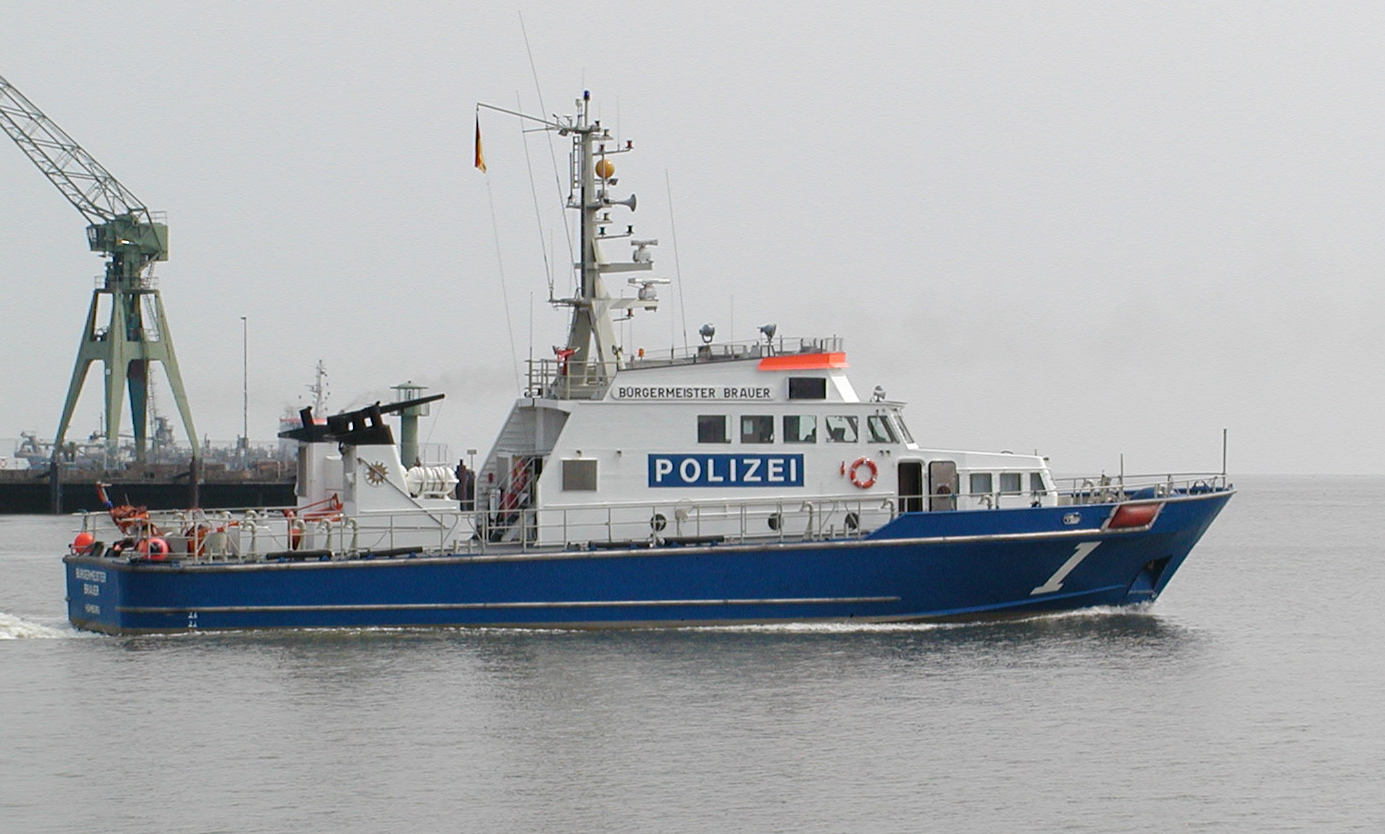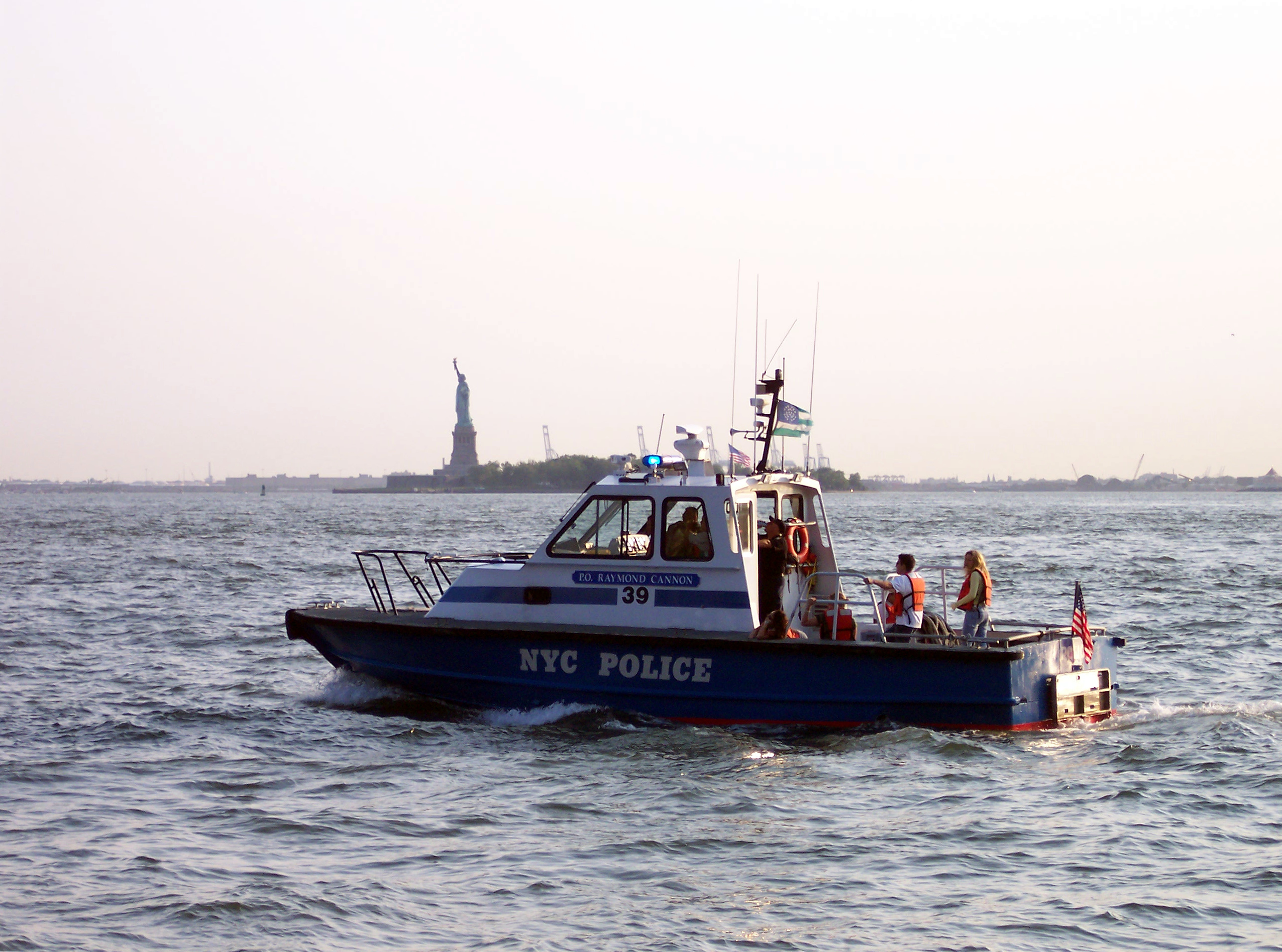|
Wasserschutzpolizei
The ''Wasserschutzpolizei'' (WSP - literally translated "Water Protection Police" in German) is the river police that patrols the waterways, lakes and harbours of Germany around the clock. The WSP are part of the '' Landespolizei'' (State Police). The Federal Police (Bundespolizei or BPOL) maintains 16 patrol craft and helicopters are part of the Coast Guard (Küstenwache) and assigned to coastal BPOL stations. The watercraft include six offshore patrol vessels, e.g. those of the ''Bad Bramstedt'' class, as well as a number of fast inshore vessels and one tugboat. About Germany has about 7,500 km of navigable waterways that are responsible for about 30 percent of goods transported. The heavy commercial traffic and increasing recreational boat traffic requires police supervision. In case of shipwrecks, often involving hazardous materials, they are responsible for warning other shipping. The WSP also often performs other duties such as enforcing environmental laws. The ... [...More Info...] [...Related Items...] OR: [Wikipedia] [Google] [Baidu] |
Charlottenburg Canal
The Charlottenburg Canal, or Charlottenburger Verbindungskanal in German, is a canal in Berlin, Germany. With a former length of , the canal was built between 1848 and 1859, and originally connected the River Spree, in Charlottenburg, with the Berlin-Spandau Ship Canal. The route of canal was north from the River Spree until it passed under the railway bridge carrying the Ringbahn, at which point it turned east along an alignment slightly to the south of that of the more recent Westhafen Canal. After the completion of the latter in 1956, the north–south aligned section of the Charlottenburg Canal was extended to form a right-angled junction with the Westhafen Canal, and the west to east aligned section was closed and filled in. The Berliner Großmarkt or Berlin Wholesale Market now covers the site of this section. The remaining long canal still links the Westhafen Canal with the River Spree and the Landwehr Canal. It has no locks. The waterways crossroad at the southern end ... [...More Info...] [...Related Items...] OR: [Wikipedia] [Google] [Baidu] |
River Police
Water police, also called harbor patrols, port police, marine/maritime police, nautical patrols, bay constables, river police, or maritime law enforcement or coastal police are police officers, usually a department of a larger police organization, who patrol in water craft. Their patrol areas may be coastal sea waters, rivers, estuary, estuaries, harbors, lakes, canals or a combination of these. Duties and functions Water police are usually responsible for ensuring the safety of water users, enforcing laws relating to water traffic, preventing crime on vessels, banks and shores, providing search and rescue services (either as the main provider or as an initial response unit before more specialized units arrive), and allowing the police to reach locations not easily accessible from land. They may also be responsible for coastal security, environmental law enforcement, immigration and smuggling patrols, and police diving, diving search operations (although many police organizat ... [...More Info...] [...Related Items...] OR: [Wikipedia] [Google] [Baidu] |
Landespolizei
''Landespolizei'' (; ) is a term used to refer to the state police of any of the states of Germany. History The ''Landespolizei'' of today can trace its origins to the late 19th century, when Germany united into a single country in 1871, under Otto von Bismarck. Various towns and cities also maintained police forces, as the increasing number of new laws and regulations made controlling urban life more complicated. In Nazi Germany, all state and city forces were absorbed into the ''Ordnungspolizei'', which existed from 1936 to 1945. After World War II, massive numbers of refugees and displaced persons, hunger and poverty characterised everyday life in Germany. Attacks by armed gangs, robbery, looting and black-marketing were commonplace, and the military police could not cope with this troubling security situation. Thus each of the Western Allies quickly permitted the formation of civilian police forces, including small numbers of heavily armed and military like organ ... [...More Info...] [...Related Items...] OR: [Wikipedia] [Google] [Baidu] |
Baden-Württemberg Police
Baden-Württemberg Police is a state law-enforcement agency in Germany. It numbers approximately 25,000 police officers and 7,000 civilian employees. The four regional police authorities (called ''Landespolizeidirektionen'' in BW) are headquartered in Karlsruhe, Stuttgart, Freiburg and Tübingen. There is also a separate police authority for the city of Stuttgart. Following a police reform in 2005, the regional police authorities are now part of the regional government authorities (''Regierungspräsidium''). The autobahn and river police stations were reorganized from separate authorities and integrated into the respective local police departments. Citizens also participate in public safety. This commitment to civic action is seen, for example, in the Volunteer Police program, where approximately 1,200 citizens voluntarily assist their local police in 20 towns. These volunteers are specially trained, wear uniforms and are armed. Their main duty is crime prevention: conducting wa ... [...More Info...] [...Related Items...] OR: [Wikipedia] [Google] [Baidu] |
Lake Constance
Lake Constance (german: Bodensee, ) refers to three Body of water, bodies of water on the Rhine at the northern foot of the Alps: Upper Lake Constance (''Obersee''), Lower Lake Constance (''Untersee''), and a connecting stretch of the Rhine, called the Seerhein, Lake Rhine (''Seerhein''). These waterbodies lie within the Lake Constance Basin () in the Alpine Foreland through which the Rhine flows. The lake is situated where Germany, Switzerland, and Austria meet. Its shorelines lie in the German states of Baden-Württemberg and Bavaria, the Swiss cantons of Canton of St. Gallen, St. Gallen, Canton of Thurgau, Thurgau, and Canton of Schaffhausen, Schaffhausen, and the Austrian state of Vorarlberg. The actual location of the border Lake_Constance#International_borders, is disputed. The Alpine Rhine forms in its original course the Austro-Swiss border and flows into the lake from the south. The High Rhine flows westbound out of the lake and forms (with the exception of the Canton ... [...More Info...] [...Related Items...] OR: [Wikipedia] [Google] [Baidu] |
Neckar
The Neckar () is a river in Germany, mainly flowing through the southwestern state of Baden-Württemberg, with a short section through Hesse. The Neckar is a major right tributary of the Rhine. Rising in the Schwarzwald-Baar-Kreis near Schwenningen in the ''Schwenninger Moos'' conservation area at a height of above sea level, it passes through Rottweil, Rottenburg am Neckar, Kilchberg, Tübingen, Wernau, Nürtingen, Plochingen, Esslingen, Stuttgart, Ludwigsburg, Marbach, Heilbronn and Heidelberg, before discharging on average of water into the Rhine at Mannheim, at above sea level, making the Neckar its 4th largest tributary, and the 10th largest river in Germany. Since 1968, the Neckar has been navigable for cargo ships via 27 locks for about upstream from Mannheim to the river port of Plochingen, at the confluence with the Fils. From Plochingen to Stuttgart, the Neckar valley is densely populated and heavily industrialised, with several well-known companies. Between ... [...More Info...] [...Related Items...] OR: [Wikipedia] [Google] [Baidu] |
Spandau
Spandau () is the westernmost of the 12 boroughs () of Berlin, situated at the confluence of the Havel and Spree rivers and extending along the western bank of the Havel. It is the smallest borough by population, but the fourth largest by land area. Overview Modern industries in Spandau include metalworking, and chemical and electrical factories. BMW Motorrad's Spandau factory made all BMW's motorcycles from 1969 until final assembly plants were added in Rayong, Thailand in 2000, and Manaus, Brazil in 2016. , Spandau's seat of government, was built in 1913. Other landmarks include the Renaissance-era Spandau Citadel, the 1848 St. Marien am Behnitz Catholic church designed by August Soller, and Spandau arsenal. That arsenal's Spandau machine gun inspired the slang ''Spandau Ballet'' to describe dying soldiers on barbed wire during the First World War, and later was applied to the appearance of Nazi war criminals at Spandau Prison. In 1979, the English New Romantic band Spa ... [...More Info...] [...Related Items...] OR: [Wikipedia] [Google] [Baidu] |
Havel
The Havel () is a river in northeastern Germany, flowing through the states of Mecklenburg-Vorpommern, Brandenburg, Berlin and Saxony-Anhalt. It is a right tributary of the Elbe and long. However, the direct distance from its source to its mouth is only . For much of its length, the Havel is navigable; it provides an important link in the waterway connections between the east and west of Germany, as well as beyond. Source The source of the Havel is located in the Mecklenburg Lake District, between Lake Müritz and the city of Neubrandenburg. There is no obvious visible source in the form of a spring, but the river originates in the lakes in the Diekenbruch near Ankershagen, close to and south-east of the watershed between the North and Baltic seas. From there the river initially flows southward, eventually joining the Elbe, which in turn flows into the North Sea. Every river north-east of it flows to the Baltic Sea. The river enters Brandenburg near the town of Fürstenberg. ... [...More Info...] [...Related Items...] OR: [Wikipedia] [Google] [Baidu] |
Spree (river)
The Spree ( ; wen, Sprjewja, cs, Spréva) is, with a length of approximately , the main tributary of the River Havel. The Spree is much longer than the Havel, which it flows into at Berlin-Spandau; the Havel then flows into the Elbe at Havelberg. The river rises in the Lusatian Highlands, that are part of the Sudetes, in the Lusatian part of Saxony, where it has three sources: the historical one called ''Spreeborn'' in the village of Spreedorf, the water-richest one in Neugersdorf, and the highest elevated one in Eibau. The Spree then flows northwards through Upper and Lower Lusatia, where it crosses the border between Saxony and Brandenburg. After passing through Cottbus, it forms the Spree Forest, a large inland delta and biosphere reserve. It then flows through Lake Schwielochsee before entering Berlin, as '' Müggelspree'' The Spree is the main river of Berlin, Brandenburg, Lusatia, and the settlement area of the Sorbs, who call the River Sprjewja. For a very short d ... [...More Info...] [...Related Items...] OR: [Wikipedia] [Google] [Baidu] |
Berlin
Berlin ( , ) is the capital and largest city of Germany by both area and population. Its 3.7 million inhabitants make it the European Union's most populous city, according to population within city limits. One of Germany's sixteen constituent states, Berlin is surrounded by the State of Brandenburg and contiguous with Potsdam, Brandenburg's capital. Berlin's urban area, which has a population of around 4.5 million, is the second most populous urban area in Germany after the Ruhr. The Berlin-Brandenburg capital region has around 6.2 million inhabitants and is Germany's third-largest metropolitan region after the Rhine-Ruhr and Rhine-Main regions. Berlin straddles the banks of the Spree, which flows into the Havel (a tributary of the Elbe) in the western borough of Spandau. Among the city's main topographical features are the many lakes in the western and southeastern boroughs formed by the Spree, Havel and Dahme, the largest of which is Lake Müggelsee. Due to its l ... [...More Info...] [...Related Items...] OR: [Wikipedia] [Google] [Baidu] |








